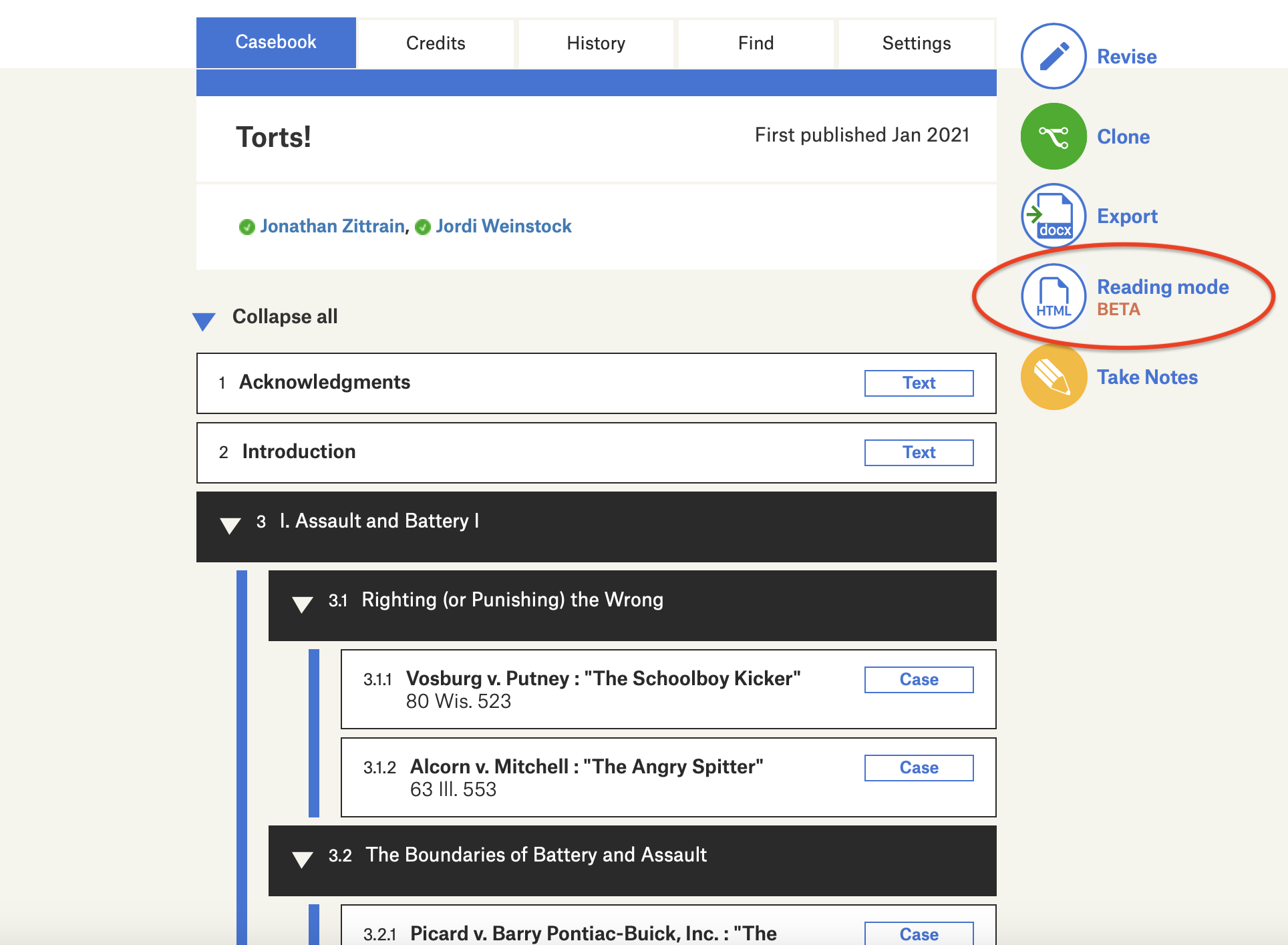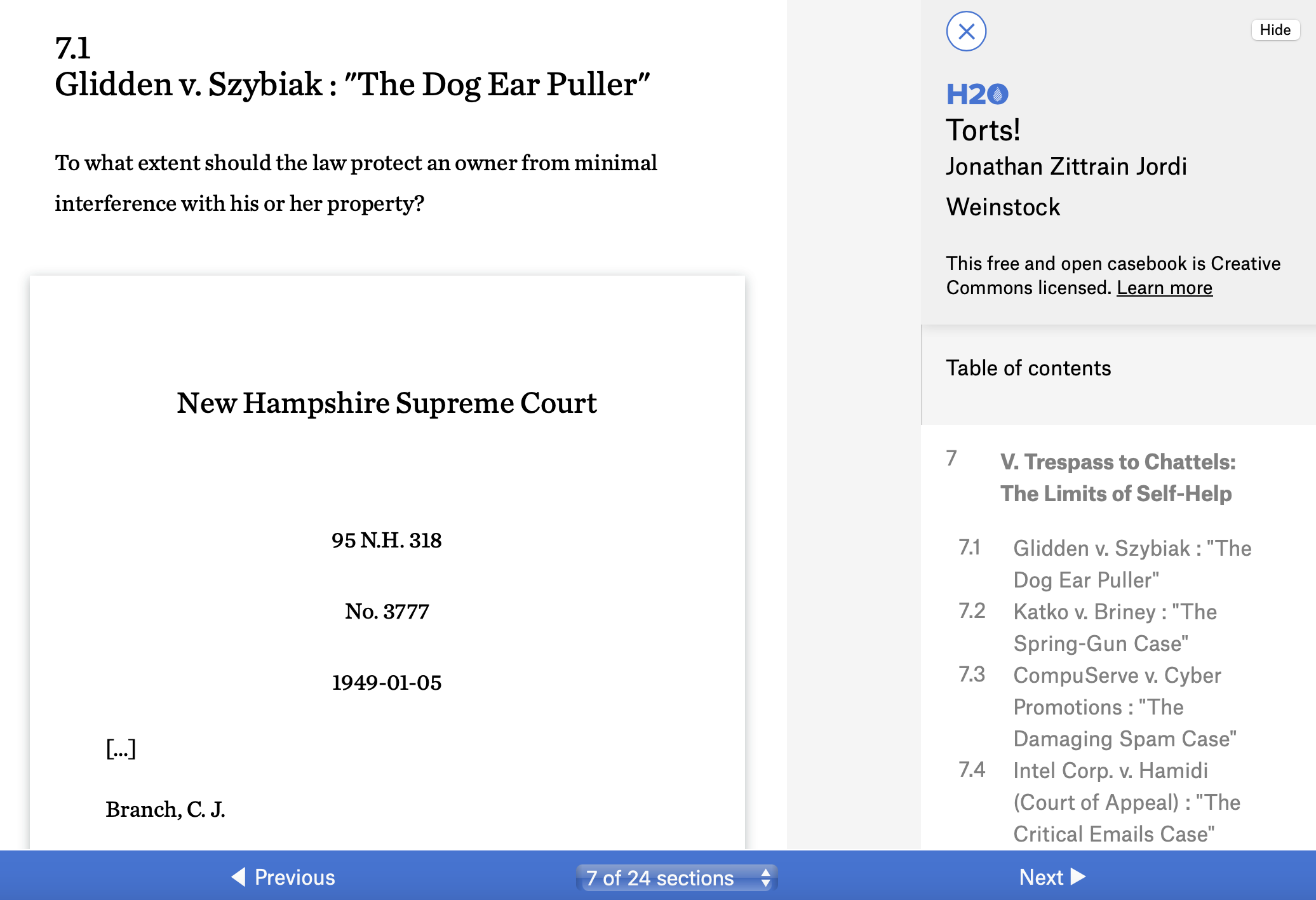Authors:
Published:
We are excited to announce the release of our “reading mode” - a new casebook view that offers students a cohesive digital format to facilitate deep reading.
We think better design of digital reading environments can capture the benefits of dynamic online books while orienting readers to an experience that encourages deeper analysis. Pairing that vision with our finding that more students are seeking digital reading options, we identified an opportunity to develop a digital reading experience that is streamlined, centralized, and most likely to encourage deep reading.
Reading mode transforms an H2O casebook into a format that more closely resembles an e-book. Casebooks now offer the ability to view and read an entire section at a time, a navigable table of contents, and a design that highlights different content types without interrupting the reading flow. Reading mode is optimized for loading speed over limited-bandwidth connections, which can be especially challenging given the average length of heavily-annotated casebooks. Attention was paid to consumption on mobile phones and tablets, devices which are rarely used for creating content, but frequently used by students when studying on the go.
Platform view

Reading mode

In 2022, we conducted a user study among law students to better understand their reading preferences. We found that most were eager for high-quality digital reading options that lower the cost of their education, reduce the number of heavy books they have to carry, and better integrate with modern study workflows that include digital tools like Google docs. We sought to meet that need with a digital reading option that did not compromise reading comprehension, and our development process was informed by research to understand the differences in learning outcomes between students who read digital versus printed material.
That research is highlighting the ways in which commercial platforms prioritizing ad placement and viewership have crafted a disjointed, surface-level digital reading experience. Educators note that students steeped in this digital reading environment seem less able to comprehend long, complex reading assignments (Baron, 2021). Researchers also find that the disjointed nature of our online reading habits carries over into even our print reading habits—we become worse at reading in any format (Wolf, 2018). More hopefully, the research finds that students who have practice reading long texts online can comprehend as much on a screen as they do in print (Baron, 2021). Further, by highlighting how digital reading platforms discourage deep reading habits, namely by offering shorter texts, endless outlinks, and ample distraction (Baron, 2021), the research offers guidance for better formats.
We are eager to develop digital reading formats that will better serve all learners. We welcome your feedback on reading mode, or other features, at info@opencasebook.org.
Citations:
Baron, Naomi. How We Read Now: Strategic Choices for Print, Screen, & Audio. Oxford University Press, 2021.
Wolf, Maryanne. Reader, Come Home: The Reading Brain in a Digital World. Harper, 2018.